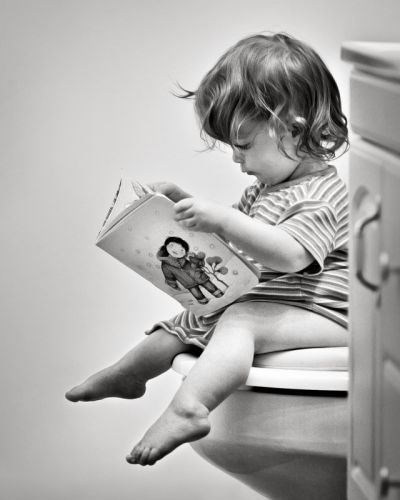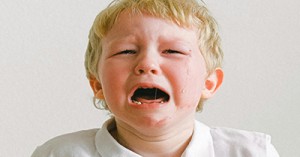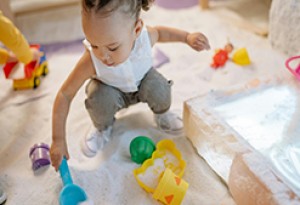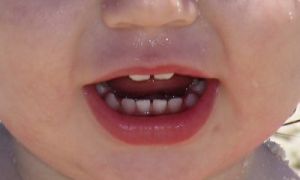Congratulations...your toddler is growing up! This is such a big milestone for your child to achieve. The toilet training phase is such an exciting part of you and your toddlers life. Tt can get messy at times during the beginning stages and there will be a fair share of “accidents”. Once you have trained your toddler to use the toilet, it's a great relief! No more nappies to change and best of all you don't have to spend money buying them!
When to start Toilet Training for Kids?
There is no right or wrong “age” to start your toddler's toilet training. Some families that begin toilet training as young as 1 and a half years old and on the other hand some parents don't begin toilet training until 3 years old. The majority of parents begin toilet training at around 2 and a half years old. So there is no right or wrong age to start.
Is my child ready?
Your toddler may already be showing signs of readiness to begin toilet training, which makes it a lot easier for you and your toddler. You will have much better success if your toddler is eager to use the toilet than if they aren't is afraid of it. Your child may be ready if:
- Your toddler has regular formed bowel movements.
- You notice that your toddler may turn red in the face or stand in the corner and have a concentrated expression on his face when he is about to do a number 2.
- Your toddler has dexterity.
- When doing wees or poos in their nappy they will tell you.
- Able to sit unsupported on a toilet/potty.
- Talks about the toilet and going their to do wees and poos.
- Your toddler is about to pull up and down his pants by himself.
- Developed physically.
- Your toddler has the ability to walk and sit down on the potty.
- Understands wee and poos.
- Your toddler may talk to you about it (great conversation starter) while you are changing his nappy.
- Needing to go.
- Your toddler begins to demonstrate the need to go to the toilet by holding on to themselves and grunting.
- Becomes Uncomfortable
- Your toddler becomes uncomfortable and complains about a dirty nappy
Where to begin?
There are so many tried and tested methods to toilet train your child. Here is a simple method that you can use to begin toilet training your child when they are ready.
Introduce the toilet/potty - Talk to your child about the toilet/potty. For some toddlers they are scared of it. Tell your child that you use the toilet to do wees and poos. Show your child how you use the toilet. The more comfortable they are with the toilet the more likely they will use it. The next time you change your toddler's nappy put them on the toilet/potty. Just sit your toddler onto the toilet/potty so they begin to get use to it. Continue this each time you change your toddler's nappy. If your toddler's nappy is dry, sit them on the toilet and they may surprise you and actually go while sitting on the toilet.
When you begin sitting your toddler onto the toilet/potty at the beginning it may seem like a game to them. They may hop on and hop off fairly quickly. Bounce up and down, sit for only a couple of seconds etc. When this happens keep reminding your child that the toilet/potty is for wees and poos and that they need to sit down properly in order for the wees and poos to go into the toilet/potty. After a few practices of sitting on the toilet after each nappy change they will begin to sit for longer periods of time. As they sit sing songs or read a story. Usually when they are distracted they end up doing a wee on the potty itself!
I'm a big kid now - After introducing the toilet and your toddler seems comfortable enough with sitting on the toilet it's time to throw away those nappies and restock them with big girl and big boy undies. Even if previously they haven't started doing wees on the toilet yet, it's best to put them straight in undies. When a child does a wee in their undies they are likely to feel really uncomfortable, after a few incidents they will remember that uncomfortable feeling and begin to start doing a wee in the toilet. Also undies are easy to pull and and down when going to the toilet and it's a great incentive for using a toilet/potty. There will be a fare few accidents which can get quite messy (especially the poos) but it's all part of the learning process... It's best to buy undies that are thick and cover the entire bottom area in case of pooey accidents.
Stand Up Boys - Usually it's the “Dad's” job to teach your son how to stand and aim in the toilet since he can watch how dad does it. It's perfectly fine for a mum to teach as well. Ask your boy to stand up facing the toilet. If he begins to wee ask him to aim it into the toilet. For the first few times your son will probably spray everywhere but sooner or later he will get the hang of it. If he can’t seem to aim it into the toilet you can put a plastic ping pong ball into the toilet for your son to aim at.
Consistency is Key - Sitting your toddler on the toilet on day 1 and then not worrying about until day 3 is not sending a clear message about using the toilet to your toddler. You must be consistent. It may take a few weeks or even only a few days for your child to start going to the toilet. Any inconsistency during this stage will definitely be a set back.
Constantly remind and ask your child if they need to “go to the toilet”. Some children are so caught up with what they are doing that they forget to go to the toilet. It's important to remember that your child is still learning the feeling of having to go to the toilet. Yes there are going to be a few accidents but it's all part of the experience. Just remember that you need to constantly remind your toddler to go to the toilet...
For the first few days, it's a good idea to physically take your child to the toilet yourself, rather than remind them. Every hour take your child and sit them on the toilet/potty. After a couple of minutes if nothing happens, try and keep them on for a little longer. During this time they need a distraction. After about 5 minutes if still nothing is coming then try again every 15 minutes until they do a wee. Once they do a wee then you can wait another hour before getting your child onto the toilet again.
Encouragement and Praise - Encourage your child when they sit on the toilet. When your toddler begins to go in the toilet praise them. Give lots of cuddles, high fives, tell everyone in the household about it. Tell your toddler that you're very proud and that they are soo big! It is a big deal that your child is able to use the toilet. Providing lots of praise to your child gives your child confidence in knowing that they are doing the right thing.
Accidents Happen - During the toilet training process there will be a few accidents. Don't start blaming and verbally abusing your child. Some parents may believe that makes a child fearful of wetting themselves again and therefore will more likely to use the toilet the next time.... Think of it this way, wouldn't that make your child think that they can't come to you for help? Your child will probably be embarrassed about it. They will start to realize how uncomfortable it is to have “it” all over themselves so after they get into the routine of going to the toilet it is less likely for accidents to occur.
When your child has an accident just simply remind them that they need to remember to use the toilet because they are a big boy/girl now and that wees and poos belong in the toilet. It's a good idea after an accident occurs to frequently remind your child to go to the toilet. Even if your child said “no” encourage your child to go and most of the time they need to use the toilet.
It's a good idea to have a separate "mop" that you can use to mop up any wee accidents occur on surfaces where mops can be used. When mopping up wees use a solution of dettol and water to mop around the area.Rinse and keep your mop in direct sunlight to dry out completely (other wise it will start to smell). For wees on carpet it's good to use a separate thick towel/sponge to dampen across the area. Also, use a solution of dettol and water to soak up the wee. Rinse and also hang it in direct sunlight to dry. For poos, the entire area must be cleaned and disinfected completely if it happens to go onto the floor. If it happens to fall onto carpet, the poos must be scrubbed clean and completely removed with antibacterial solution.
You may notice that your child may be able to go to the toilet for wees but very reluctant to do poos in the toilet/potty. This is completely natural and may take awhile for a child to do a poo in the toilet itself. Doing wees itself is a big task for some children. Your child should have regular "poo" times throughout the day so during this time encourage them to sit on the toilet. If you notice any signs that you child may be about to do a poo, lead them to the toilet and encourage them to go on the toilet itself. Don't make it a big deal as the "poo" feeling could go away and your child may hold it in.
Nappies should still be worn throughout the night. Before bed encourage your child to do a wee on the toilet. If you notice that your child's nappy is completely dry in the morning then remove the nappy at night. You may want to place a waterproof sheet on the bed in case of any accidents during the night. Remove the nappy as your child wakes up and get them to go to the toilet in the morning. So, your child should only be wearing 1 nappy at night time only.
A Great Success - The two most important signs you should know are that your child is now toilet trained is that they have hardly any accidents and that they tell you when they need to go to the toilet. When that day finally comes your toddler has achieved one of the most important achievements in their development. No more nappies at last.
Please don't compare your child's toilet training with another child. Some children take longer than others but in the end it's up to you to provide support and encouragement to your child during this time. Sometimes a little bribing at the start or toilet training does give your toddler that little extra incentive to do a wee. So, use a sticker chart or a stamp or give a piece of chocolate only when they do something in the toilet... There is nothing wrong with giving that little extra encouragement to your child to help them to go.
Toilet training is repetitive, a time to bond with your child, messy and sometimes frustrating but it's part of your child's develop, one of the many things you can teach them to do!










